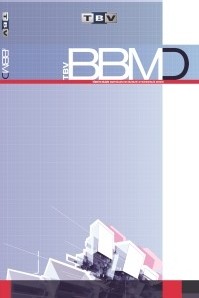İki Boyutlu(2D) Arkeolojik Parçalanmış Nesnelerin Görüntü İşleme ve Geometrik Metotları Kullanarak Birleştirilmesi
Arkeologlar ya da restoratörler tarafından arkeolojik kalıntılar ile yapılan tekrar birleştirme süreçlerinde; ilk olarak kalıntı parçalarının analizi, eşleşen varsayımları tasarlama, kalıntı gerçek parçaları üzerinde bu varsayımları prova yapma ve çapraz karşılaştırma ve son olarak da öngörülen yeniden yapılandırma varsayımına göre bitişik parçaların birleştirilmesi adımları el ile yapılmaktadır. Bununla birlikte parça sayısının fazla olması, parçaların aşınması, parçaların üzerindeki desen ve renklerin silinmesi nedeniyle tekrar birleştirme adımları zaman alıcı ve zor bir süreçtir [1],[2],[3]. Bu çalışmada arkeolojik kazılar sonucunda ortaya çıkan iki boyutlu parçalanmış duvar resimleri ve mozaikler gibi kalıntı nesnelerinin dijital görüntüleri üzerinden görüntü işleme ve geometrik yöntemler kullanarak tekrar birleştirerek gerçek nesnenin görüntüsünü oluşturan bir uygulama geliştirilmiştir. Geliştirilen uygulama üzerinde farklı iki boyutlu parça görüntülerinin belirlenen kısıtlar kapsamında gerçek nesne görüntüsünü yeniden oluşturmada başarılı sonuçlar vermiştir.
Anahtar Kelimeler:
Arkeolojik Kalıntı Parça Görüntüleri, Görüntü İşleme, Geometrik Yöntemler, Gerçek Görüntü Oluştırma Algoritması
Reassembly of Two-Dimensional(2D) Archaeologically Fragmented Objects Using Image Processing and Geometric Methods
In the reassembly processes made with archaeological remains by archaeologists or restorers; the analysis of fragments of the remains, designing the matching assumptions, rehearsing and cross-comparison of these assumptions on the real fragments of the remains, and finally assembling the adjacent fragments according to the proposed reconstruction assumptions are done manually. However, reassembly steps are time-consuming and exhausting because of the large number of parts, wear of the parts and deletion of the patterns and colors on the parts. In this study, an application has been developed that creates the image of the real object by combining digital images of relic objects such as two-dimensional fragmented wall paintings and mosaics, which emerged as a result of archaeological excavations, with the help of using image processing and geometric methods. On the developed application, it has given successful results in recreating the real object image within the specified constraints
Keywords:
Archaeologically Fragmented Remains, Image Processing, Geometric Methods, Real Image Generation Algorithm,
___
- Tsamoura E., Pitas I., “Automatic Color Based Reassembly of Fragmented Images and Paintings,” IEEE Transactıons On Image Processing, vol. 19, no. 3, 2010.
- Papaodysseus C., Arabadjis D., Panagopoulos M., Rousopoulos P., Exarhos M., Papazoglou E. "Automated reconstruction of fragmented objects using their 3D representation - application to important archaeological finds" 9th International Conference on Signal Processing (2008): 769-772.
- Papaodysseus C., Exarhos M., Panagopoulos M., Rousopoulos P., Triantafillon C., Panagopoulos T. , "Image and Pattern Analysis of 1650 B.C. Wall Paintings and Reconstruction" IEEE Transactions on Systems, Man, and Cybernetics - Part A: Systems and Humans (2008) : 958 – 965.
- Willis A.R., Cooper D. B., "Computational reconstruction of ancient artifacts" IEEE Signal Processing Magazine (2008): 65-83.
- Palmas G., Pietroni N., PCignoni P., Roberto Scopigno "A computer-assisted constraint-based system for assembling fragmented objects" Digital Heritage International Congress (DigitalHeritage) (2013, Volume: 1): 529-536.
- Zheng J. Y., Zhang Z. L., Abe N. , "Virtual recovery of excavated archaeological finds" IEEE International Conference on Multimedia Computing and Systems (1998): 348-357.
- Liu H., Cao S., ve Yan S., “Automated assembly of shredded pieces from multiple photos,” IEEE Transactions on Multimedia, vol. 13, no. 5, pp. 1154–1162, 2011.
- Amigoni F., Gazzani S., Podico S., “A method for reassembling fragments in image reconstruction”, in: Proceedings of ICIP, vols. 3,2, 2003, pp. III-581–4.
- Leitao H. da G. ve Stolfi J., “A multiscale method for the reassembly of twodimensional fragmented objects,” Pattern Analysis and Machine Intelligence, IEEE Transactions on, vol. 24, no. 9, pp. 1239–1251, Sep 2002.
- MM P., Tabia H P. D, (2018) “Image reassembly combining deep learning and shortest path problem”. In: Proceedings of the European conference on computer vision (ECCV), pp 153–167.
- Gur, S., Ben-Shahar, O.: “From square pieces to brick walls: The next challenge in solving jigsaw puzzles”. In: ICCV. (2017).
- Zhang M., Chen S., Shu Z., Xin S., Zhao J., Jin G., Zhang R., ve Beyerer J., 2016. “Fast algorithm for 2D fragment assembly based on partial EMD”. The Visual Computer 32 (2016), 1–12.
- https://muze.gov.tr/.
- Wu, S.T.; Marquez, M.R.G. “A non-self-intersection Douglas-Peucker algorithm.” In Proceedings of the 16thBrazilian Symosium on Computer Graphics and Image Processing (SIBGRAPI), Sao Carlos, Brazil, 12–15October 2003.
- Douglas, D. H., & Peucker, T. K. “Algorithms for the reduction of the number of points required to represent a digitized line or its caricature” The International Journal for Geographic Information and Geovisualization, 10(2), 112–122. doi:10.3138/fm57–6770-u75u-7727.
- Machisi, E.. 2014. “Students’ Use of MultipleSolution Strategies to Find the AngleBetween Two Intersecting and Non-perpendicular Lines”. MediterraneanJournal of Social Sciences MCSERPublishing, Rome-Italy, 5 (6) : 309-317.
- Le C. ve Li X., “JigsawNet: Shredded Image Reassembly using Convolutional Neural Network and Loop-based Composition,” IEEE Transactions on Image Processing, 28(8), 4000-4015, August 2019.
- ISSN: 1305-8991
- Başlangıç: 2005
- Yayıncı: Türkiye Bilişim Vakfı
Sayıdaki Diğer Makaleler
Bankacılık sektörü için topluluk öğrenimini kullanan iki aşamalı bir müşteri şikayet yönetimi
Muhammed Mehmet AKGÜMÜŞ, Ali BOYACI
Selçuk YAZAR, Bora ASLAN, Deniz TAŞKIN
Hatice NİZAM ÖZOĞUR, Zeynep ORMAN
Derin ve Sığ Makine Öğrenmesi Yöntemleri ile Türkçe Tweetlerden Saldırgan Dil Tespiti
Bulanık Mantığın Akıllı Etmenlere Bütünleştirilmesi: Bir SFS Üzerinde Deneyler
